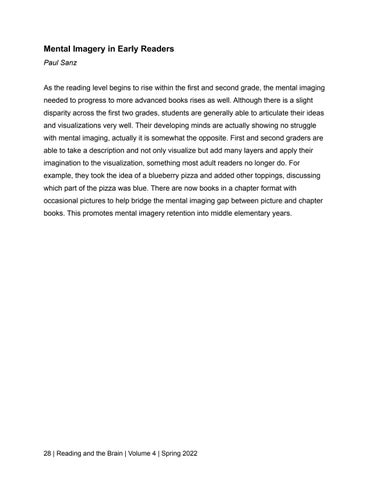Mental Imagery in Early Readers Paul Sanz As the reading level begins to rise within the first and second grade, the mental imaging needed to progress to more advanced books rises as well. Although there is a slight disparity across the first two grades, students are generally able to articulate their ideas and visualizations very well. Their developing minds are actually showing no struggle with mental imaging, actually it is somewhat the opposite. First and second graders are able to take a description and not only visualize but add many layers and apply their imagination to the visualization, something most adult readers no longer do. For example, they took the idea of a blueberry pizza and added other toppings, discussing which part of the pizza was blue. There are now books in a chapter format with occasional pictures to help bridge the mental imaging gap between picture and chapter books. This promotes mental imagery retention into middle elementary years.
28 | Reading and the Brain | Volume 4 | Spring 2022

